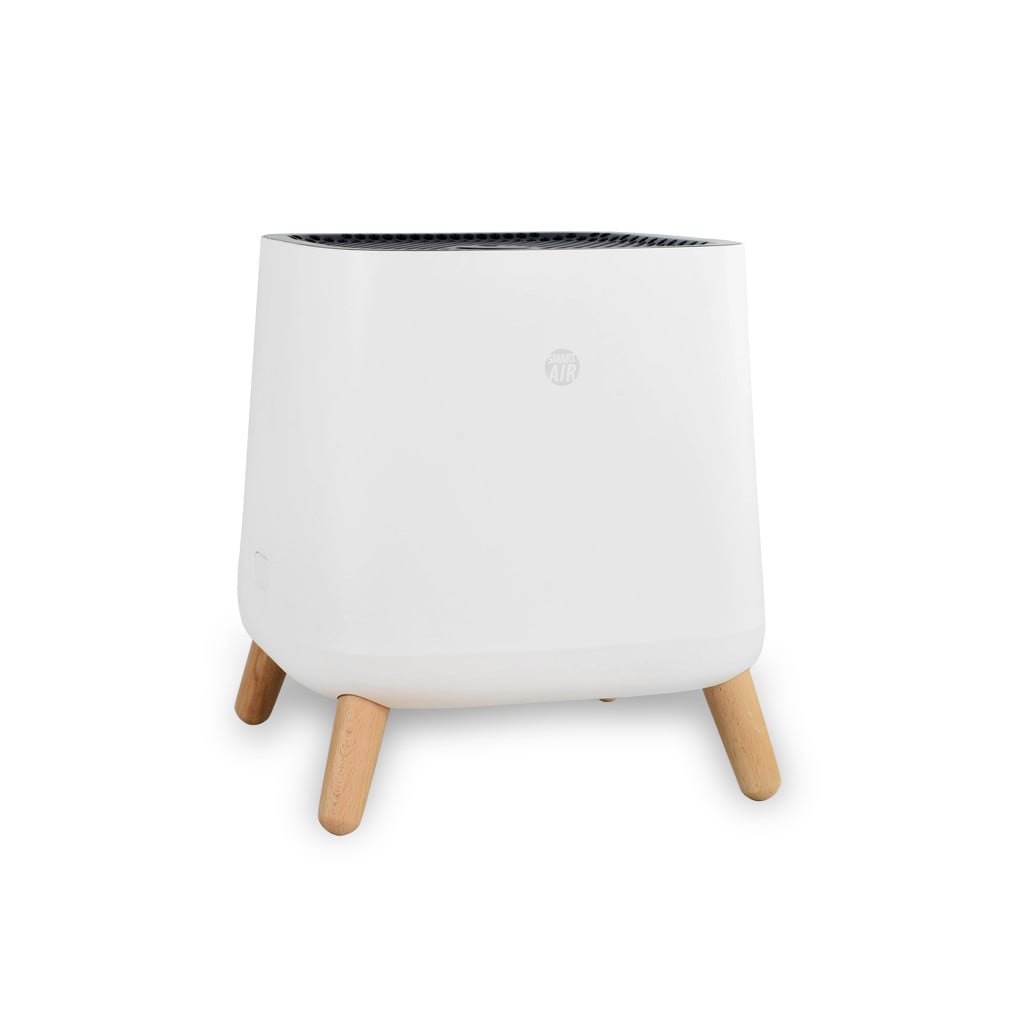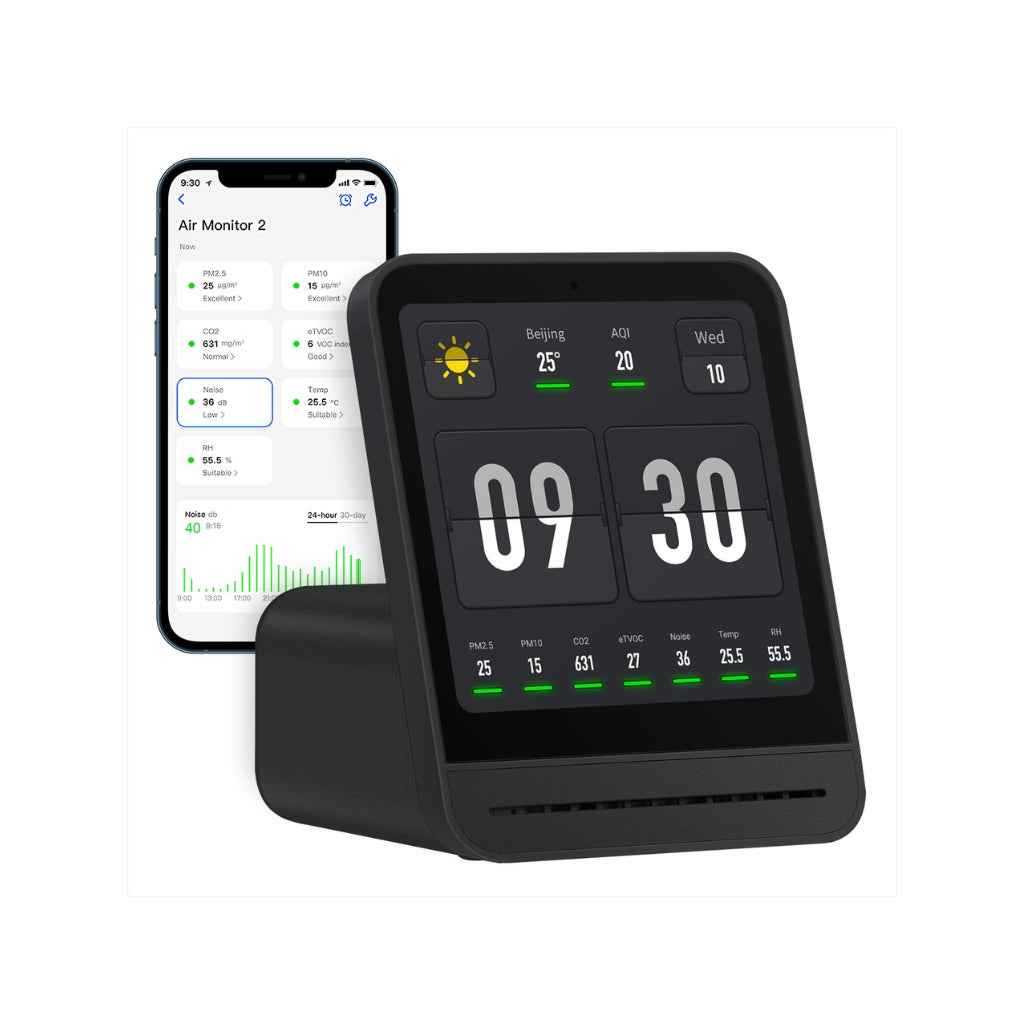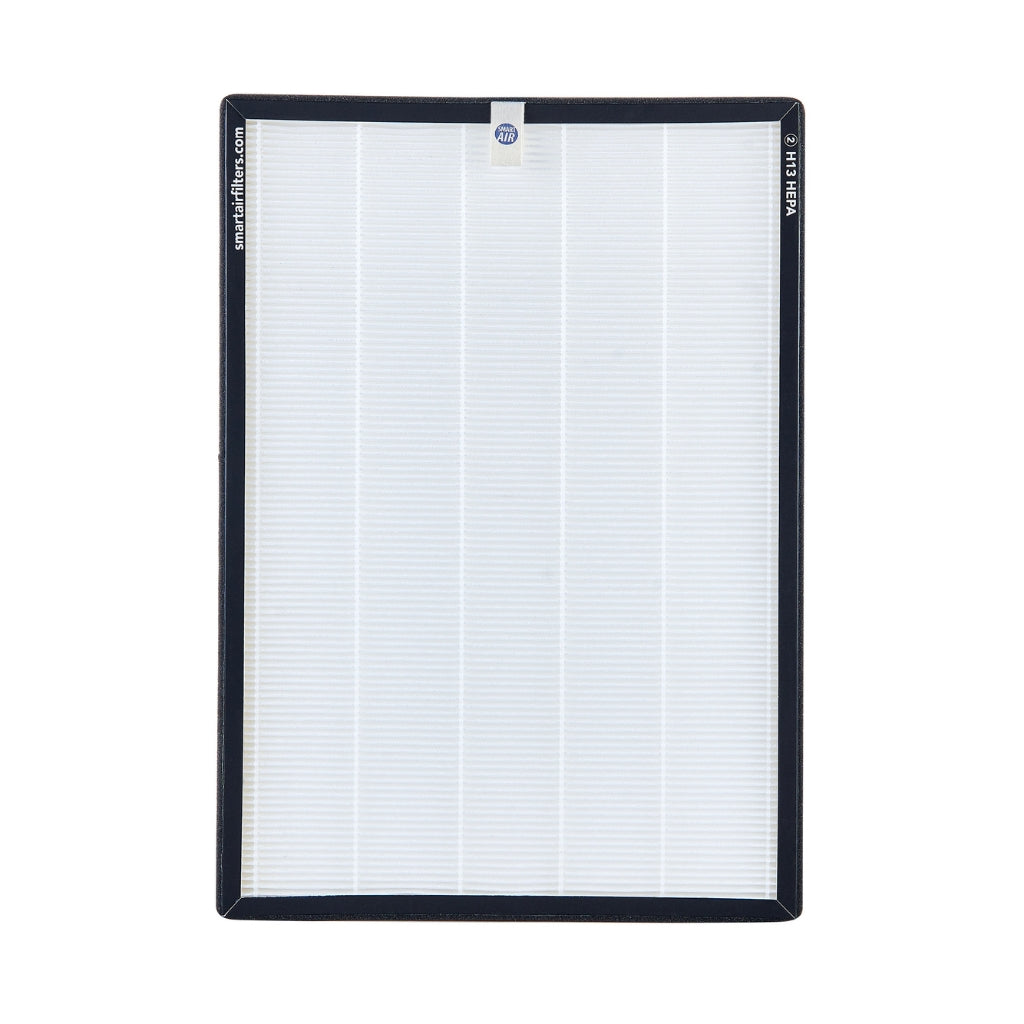Clean Air Blog
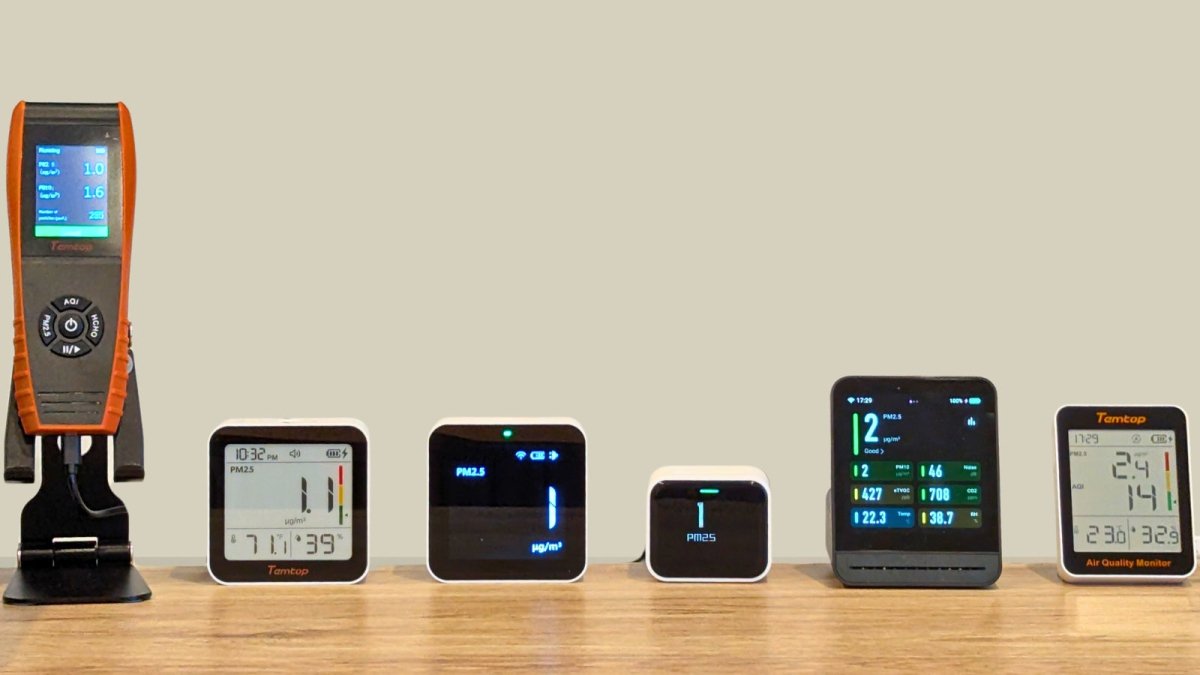
Clean Air Blog
PM2.5 Monitor Accuracy - Comparing 6 Temtop & Qingping Units
on Aug 20 2025
We’ve expanded our air quality monitor range to include Temtop. Like our existing models from Qingping, Temtop has a reputation for well-priced products with high levels of accuracy.
Accuracy is non-negotiable for us, so we started with models that already have independent test results and used those as anchors in a simple, real-world comparison. We then co-located all six monitors (Qingping and Temtop) and aligned the data over several days. The curves moved together, and the typical gaps were small. That gives us confidence that the new additions sit in line with our verified units.
Independent Testing Anchors
Southcoast AQMD, based in California has a program where they compare air quality monitors with high grade reference equipment. This provides independent test data for dozens of models, from low cost ones like the QP Lite to ones costing thousands of dollars. For PM2.5, all the results are published here.
Several of our units already have results available from Southcoast AQMD. All showed strong correlations with the reference equipment for PM2.5 measurements, and low mean errors - often beating monitors costing thousands of dollars!
Model
Field R2 (Correlation)
Field MAE (Absolute Error)
Qingping Lite
0.85 to 0.93
1.8 to 3.6
Qingping Pro
0.86 to 0.90
1.8 to 2.3
Temtop LKC-1000S+
0.91 to 0.92
3.1 to 3.6
Note, original model of Pro and Temtop LKC were tested, updated models used for our comparison testing.
Why PM2.5 Matters
PM2.5 are tiny particles that can reach deep into the lungs and even the bloodstream. When air pollution is talked about, it typically refers to levels of PM2.5, due to the serious health impacts. In New Zealand, indoor levels can often be higher than outdoors. Seeing the levels and changes in your home or workplace can help you decide if interventions such as ventilation or air purification is required.
What we tested
Models: Qingping Lite, Qingping Pro 2, Temtop M10i, Temtop M10+, Temtop S1+ and Temtop LKC-1000S+ 2nd.
Environment: Same bench in an apartment (Christchurch), co-located and away from air vents.
Period: 14 - 18 August 2025, hourly measurement results
Objective: Check how closely the models track together in real conditions, using indepdently tested units as the benchmark
Method and limitations
Recording frequency: We aligned measurements to the unit with the lowest recording frequency (M10+), so all results are reported hourly.
Time adjustments: Not all units were recording exactly on the hour, so the closest recording to the hour was used. In some cases this was 5mins before or after the hour.
Units plugged in: All units were plugged in to ensure regular readings and updating
PM2.5 Exposure: Two spikes occured due to cooking with the frypan. No air cleaning was used, in order to keep levels high for longer.
Results
By the numbers
Most pairs have correlations between 0.95 and 0.99, indicating very high levels of correlation
Typical difference: Around ~1 µg/m³ when averaged over the period
Mean reading: Small spread across devices, mean PM2.5 reading for the each device across the entire period was between 3.2 and 5.0 µg/m³.
Variances observed during initial PM2.5 spikes, due to timing of readings.
What this means for buyers
We can confidently say the PM2.5 readings on our units are all accurate and reliable! Models we have which haven't got independent Southcoast AQMD reports very closely track those that do. This is as good as it gets for air quality monitors!
If you're looking for affordable and accurate air quality monitors, look no further than our range of PM2.5 capable monitors!
A note about PM10
One of the reasons we focus on PM2.5 is that PM10 numbers from low-cost optical sensors are generally less reliable than PM2.5. This is shown in the Southcoast AQMD results, where PM10 accuracies were always quite a bit lower than for PM2.5. This essentially boils down it it being more complex to measure for PM10 sized particles. If you'd like to learn more, there's a great writeup about this here.

Clean Air Blog
How Cooking Affects Indoor Air Quality (Real World PM2.5 Test)
on Jun 14 2025
It's hard to beat the aroma of garlic or steak sizzling away on the frypan as it fills your kitchen with flavour. But under those delicious scents lies fine particles called PM2.5, that can travel deep into your lungs and affect your indoor air quality. In a test in a Christchurch apartment in May 2025, cooking on a front burner pushed PM2.5 levels throughout the apartment into the hazardous range, even with the rangehood set to full power.
In this article we'll show you exactly how we measured those spikes, how bad it got and how much of a difference using Air Purifiers made. Armed with this information, you can ensure you keep your air clean, whatever you're cooking!
Figure 1: Rough Layout of Apartment + Positions of Monitors and Purifiers
First Test: Baseline (No Air Cleaning)
This experiment actually started accidentally, after noticing the air quality as measured on my QP Pro units was at very concerning levels. It turned out that even at full power, my rangehood barely captured smoke from the front two hobs. This is definitely a bit of a surprise given this is a relatively new apartment.After frying for about 15 minutes, it seemed a little hazy and smokey inside. I checked my air quality monitors in both the lounge and separate bedroom, and both showed very high readings! With PM2.5 counts of over 300 µg/m³, you really want to limit your exposure to this. For perspective, this is about three times higher than the average pollution level in Delhi, and is well into 'hazardous' air quality levels.
If you stop cooking, you immediately remove the PM2.5 source. But on a chilly day with windows closed, those particles can linger for hours. While the rangehood extractor fan was used, it hadn't effectively drawn out the cooking smoke. Being a chilly day, no windows or doors were opened. Here is how the air quality looked over the evening:
Figure 2: PM2.5 Readings in Bedroom and Lounge from Cooking
Note: PM2.5 to air quality ratings sourced from EPA AQI breakpoints.
As you can see, the PM2.5 levels shot up very quickly when the cooking started. For several hours the air quality was at or above unhealthy levels, even lingering at hazardous amounts for awhile! What does this mean? Basically the equivalent of smoking about 1.3 cigarettes!
Definitely not something you want to be regularly exposed to. Especially if you have asthma or other breathing sensitivities.
Second Test: With Air Purifiers
This time, our accidental experiment was repeated with one key tweak, switching on air purifiers when the concentrations peaked. The apartment is well covered on that front, with a Smart Air Sqair in the bedroom and a Smart Air SA600 in the main living/kitchen area.You'll notice from the layout graphic earlier, we've also placed the purifiers away from the air quality monitors. This helps ensure the readings are representative of the actual air quality in the apartment, and not just the air quality around the purifier.Now the big reveal, how much of a difference can the air purifiers make? We allowed the PM2.5 concentrations to reach similar levels to our baseline test, and then turned both purifiers on at their max power settings.
Figure 3: PM2.5 Readings in Bedroom and Lounge from Cooking, using Air Purifiers
The outcome? In just 30mins, PM2.5 concentrations had dropped by over 90% - this is compared to between 25% and 29% when we didn't use them. Air quality reached the optimal 'Good' level within 45mins in the bedroom and within 1 hour in the main living area!Why are these air purifiers so effective at removing cooking pollutants and smoke? It's all thanks to the combination of HEPA filters and high Clean Air Delivery Rate (CADR).
The HEPA filters on both units are very effective at absorbing harmful particulate matter in the air, such as from frying and smoke. However, a good HEPA filter won't do much if the purifier isn't able to send much air through it. With CADRs of 315m³/hr and 500m³/hr respectively, the Sqair and SA600 are able to push significant amounts of polluted air through their filters. This makes them best in class when it comes to how effectively they purify air. As you can see, we can back this claim up with real data!
Smart Air Sqair
Smart Air SA600
Stylish, powerful and quiet at a great price. Perfect for the bedroom, or any space up to 43m².
Dual inlets with filters on each side. Serious cleaning power for larger spaces up to 60m², while remaining quiet.
Other air quality measures you can take:
Ensuring your rangehood is working effectively will certainly help reduce the amount of PM2.5 in the air.
Mechanical ventilation i.e. HRV/DVS etc if you have it. This will bring in air from outside or the roof space which should be much less polluted.
Finally opening windows and doors to let a breeze through, even if for just a short while will also quickly help lower the amount of pollutants.
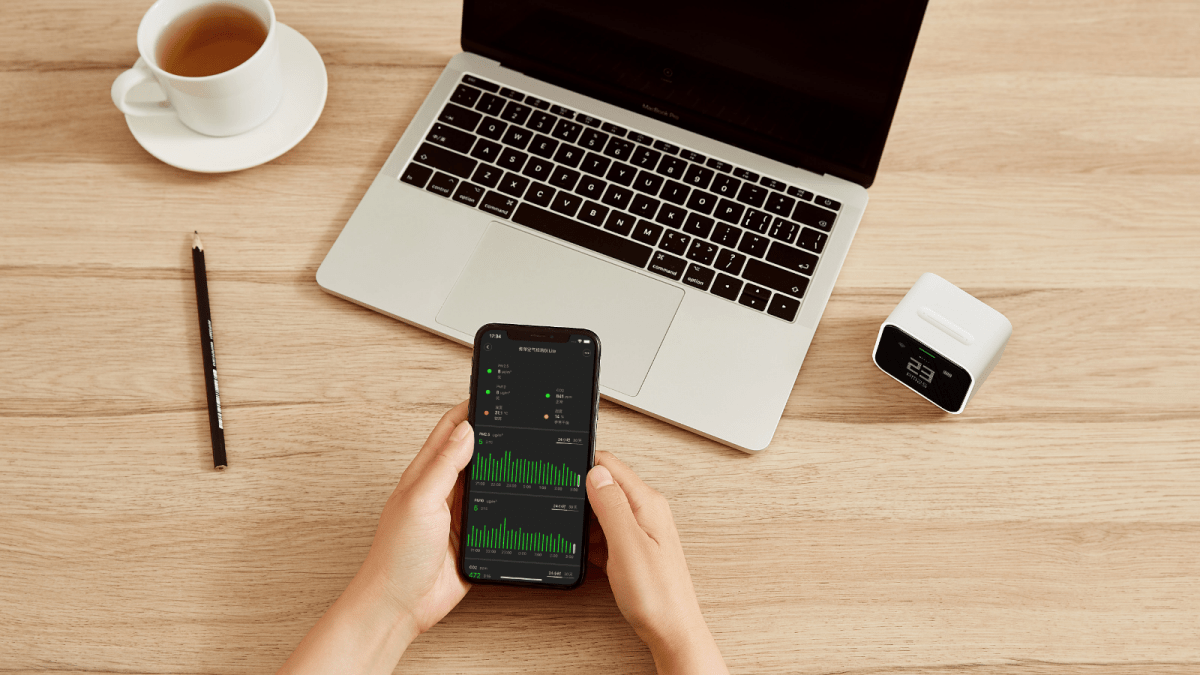
Clean Air Blog
What I Learnt From Monitoring My Air Quality
on Jan 04 2025
Like many Kiwis, I used to never give a second thought to the air I'm breathing. Our landscape isn't covered in polluting factories or coal plants and we're known for our (relative) clean air. However, after learning more about indoor air quality, I decided to start monitoring the air inside and was surprised by what I discovered!
How do you Monitor the Air?
While it's not an uncommon thing to do overseas, monitoring air quality is still something not many Kiwis are familiar with. While it's possible to pay professionals to come in and do a detailed report, there is a much easier (and cheaper) way. Enter the Indoor Air Quality Monitor, a device with sensors to measure air quality issues such as PM2.5, CO2, VOCs and more.
For the past 2 years I've used a QP Lite, QP Pro and Smart Air CO2 Monitor to keep tabs on the air in my home. With an affordable price, high accuracy and data download ability, they're some of the best options on the market and we're pleased to stock them here at Snap Air.
First Surprise: CO2 Levels While Sleeping
Like many of us, I took it for granted that sometimes we'll wake up feeling groggy, tired and maybe with a bit of a headache. While there are many possible causes for this, have you ever considered CO2 might be behind it?
Bedrooms are small spaces and if you close the door and windows, where does fresh air come from? As we breathe oxygen is converted to CO2 and without ventilation the levels can rise surprisingly fast! Especially if you have a partner in the same bedroom.
CO2 levels are reported in parts per million, with outdoor air being around 420ppm. Once the air reaches 1000-2000ppm you'll typically experience drowsiness and from 2000-5000ppm headaches and other complaints can occur. I was very surprised to see the levels for my bedroom at night regularly reach over 3000ppm! Once I improved the ventilation, I noticed I'd wake up feeling less groggy and more alert.
Below is an example comparing relatively good ventilation in a bedroom (initially) then poor ventilation later in the week. You can also see just how quickly the CO2 levels drop when ventilation is introduced (opening the door) in the morning!
CO2 Concentration Levels: Measured with Smart Air CO2 Monitor
Second Surprise: VOC Levels in a New Apartment
Having moved into a newly built apartment for a period of time in 2023, I found the 'new building smell' very powerful and I would often get headaches. Unfortunately this is a common experience for many new home owners, as the off gassing from paint, flooring and fabrics etc. produces VOCs like Formaldehyde and Benzene. These can cause symptoms like headaches, respiratory issues, dizziness and throat irritations.
There was a sharp increase in average VOC levels reported on my QP Pro after moving into the apartment, compared to an older existing house.
Previously, measurements were around 0.3-0.4 mg of TVOC per m³. In the new building, it was 10 times higher and would be between 3 and 4mg per m³. This puts it in the potentially dangerous threshold.
Luckily there is action that can be taken to help reduce these levels. The most effective measure is introducing fresh air by opening doors and/or windows. You can also achieve this with mechanical ventilation. If neither of these options are possible, consider an Air Purifier with Activated Carbon Filter.
Here are some readings from the apartment showing the slow rise of VOC levels, then how quickly they get eliminated by opening windows and allowing a breeze through!
TVOC Concentrations: Measured by QP Pro Air Quality Monitor
Third Surprise: PM2.5 Levels from Vaping
While there has been a surge in vaping in recent years, we're still learning about its potential impacts. Having lived with someone who vapes in their room, I've been able to see how it impacts on air quality - especially when ventilation is limited. While it produces a fine mist and sends chemicals into the air, the process of vaporising the liquid also sends particulate matter into the air, including harmful PM2.5.
To learn more about PM2.5, see the below video:
While I wasn't surprised to see vaping having an impact on air quality, I was surprised at just how high the PM2.5 levels would get - even while in a different room. We've had reports from some of our customers about being impacted by others in their household vaping, which isn't surprising given these results!
On the plus side, levels do drop fairly quickly back to normal once the vaping stops. However, peak concentrations ended up at levels you'd see in the most polluted cities in the world, at their absolute worst!
The below graph shows the levels of PM2.5 measured from an adjacent room to the one being vaped in.
PM2.5 Levels: Measured with QP Pro Air Quality Monitor:
Wrapping Up
Ready to make your own discoveries in air quality? We've got you covered with accurate and affordable air quality monitors!
Feel free to leave a comment below if you found anything interesting when you started monitoring your air!

Clean Air Blog
How the Right Air Purifier Safeguards Your Little One’s Health
on Oct 16 2023
When setting up a nursery for your precious little one, there's a checklist of essentials most parents are aware of - a crib, changing table, soft lighting, and comforting decor. But have you considered the air quality in the nursery? You might wonder, "Is an air purifier a good addition to my nursery?" The answer is a resounding yes! An air purifier can be a nursery necessity, safeguarding your child's health by filtering out harmful pollutants and ensuring a peaceful sleep.
Key Points Summary:
Childhood Asthma in NZ: Asthma is prevalent among children in New Zealand; an air purifier can help by removing airborne irritants.
Negative Ion Concerns: Avoid air purifiers releasing negative ions as they can produce ozone, harmful to tiny lungs, especially concerning given some are marketed for nursery use in NZ.
Combatting Odours and Allergens: Air purifiers tackle odours, pet dander, and outdoor pollution that seeps indoors, ensuring a fresh and clean nursery environment.
Virus and Bacteria Reduction: Create a healthier space by reducing the presence of viruses and bacteria, crucial in a child's early years for better immunity.
Noise and Light Considerations: Choose a quiet air purifier with minimal light emissions to maintain a serene, sleep-conducive nursery ambiance.
Affordable, Effective Options: Our range of air purifiers offers high CADR (Clean Air Delivery Rate) and low noise levels without breaking the bank, tailored for New Zealand homes.
Why An Air Purifier is Essential
The early stages of life are certainly special. But this phase also brings vulnerability, especially to elements in the environment. The air that we breathe can either help us become strong and healthy, or harm us. Here’s a deeper look into why investing in an air purifier is an important consideration for your nursery:
The Unseen Threats: Viruses and Bacteria
While sickness is inevitable at young ages, there are ways to mitigate this risk. Air purifiers work to reduce the presence of viruses and bacteria in the air.
The Surprising Risk of Outdoor Pollution
New Zealand's picturesque landscapes can be deceiving when it comes to air quality. Construction, vehicle emissions, and fireplaces contribute to outdoor pollution, including the dangerous PM2.5 pollutants, which can infiltrate your home, posing a risk to your little one.
Pet Dander and Other Allergens
Many families couldn't be without their furry companions, but pets can introduce dander and other allergens into the air. An air purifier can significantly mitigate these allergens, ensuring a fresher environment for your child. Take a look at our article to learn more about how an air purifier can help with pets.
The Impact of Air Quality on Children
Children, with their still-developing organs and faster breathing rates, are more susceptible to the adverse effects of poor air quality. This article by Smart Air sheds light on how air pollution can affect children even before birth, linking exposure to certain pollutants with birth defects.
Air pollution doesn't spare the toddlers and young children either. It has been associated with neurodevelopmental disorders, childhood obesity, reduced lung growth, acute lower respiratory infections (ALRI) like pneumonia, asthma, and even childhood cancers. A staggering fact is that air pollution accounts for 1 in 10 deaths in children under five years old globally.
Given these alarming facts, the case for a quality air purifier in your nursery becomes a compelling one. An air purifier equipped with a HEPA filter and a carbon filter can significantly reduce the exposure of your child to these harmful pollutants, providing a safer environment for them to grow and thrive.
Choosing the Right Air Purifier
Not all air purifiers are created equal, especially when it comes to safeguarding the health of our little ones. We've got an in depth guide here, but here are some crucial factors to consider:
No Negative Ions
It’s alarming to find a range of air purifiers in New Zealand marketed for use in nurseries that release negative ions. While they might sound harmless or even beneficial, these ions can produce ozone—a gas that’s harmful to the lungs, particularly the still-developing lungs of a child.
In New Zealand the negative ion generation 'feature' is often marketed with different names including ionisers, plasma generators and more.
HEPA Filters Are Your Friend
HEPA filters HEPA filters are the gold standard in air purification, capturing over 99% of 0.3 microns sized particles - the hardest to capture. Ensure that the air purifier you choose has a genuine HEPA filter, and avoid products with "HEPA-like" filters, which are less effective.
Consider the Noise and Lights
You’ll want an air purifier that operates quietly to ensure your baby can sleep soundly through the night. Similarly, many air purifiers come with bright lights which could disturb your child's sleep. Look for models that operate under 30dB on low and allow you to turn off the lights (or like ours which have no lights!).
Price and Performance
Investing in a quality air purifier pays off in the long run. Make sure to look at the Clean Air Delivery Rate (CADR) when comparing air purifiers, and not the room sizes recommended by manufacturers as they can be misleading!
Our Selection for Your Peace of Mind
We’ve curated a range of air purifiers tailored for New Zealand homes, ensuring safety and effectiveness. Our selection of Smart Air purifiers avoids any models that release negative ions, operates at low noise levels and most importantly is affordable!
For use in a nursery, we recommend either:
Smart Air - The Sqair, or
Smart Air - SA600
Wrapping Up
Investing in a good air purifier is investing in your child’s health. As parents, we can’t control the outdoor air quality, but we certainly have a say in the air our little ones breathe indoors. Take a step towards creating a safer, cleaner environment for your baby, and breathe easy knowing you’ve made a sensible choice.
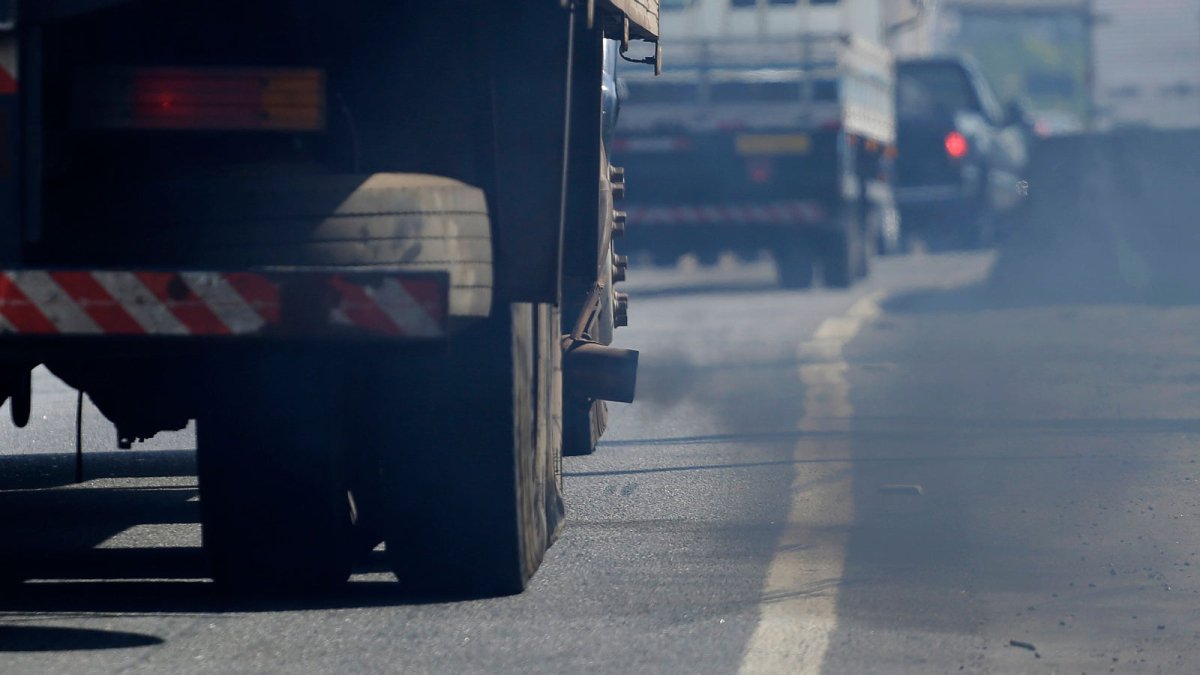
Clean Air Blog
Exploring the Causes Behind Air Quality Issues in New Zealand
on Jul 30 2023
We're well known for our breathtaking natural landscapes, often associated with clean air and an untouched environment. However, there are areas of the country where poor air quality issues are an unfortunate reality. Let's take a closer look at the causes of air pollution in NZ.
Air Pollution: The Big Picture
As per the latest LAWA Air Quality National Picture Summary, NZ has relatively good air quality overall. Yet, in some regions, people are exposed to higher levels of particulate matter, particularly during the winter months.
This disparity arises due to several factors, such as weather conditions, geography, and the nature and volume of emissions present in each area.
Winter Woes: Home Heating and Air Quality
As we previously discussed in our blog on winter air quality issues, the lack of wind on colder winter days and the occurrence of inversion layers can trap particulate matter close to the ground, causing pollution levels to spike. Wood burners are popular in these areas, which emit particulate matter.
The Role of Vehicles in Air Pollution
Motor vehicles, especially those that are diesel-powered, are significant contributors to air pollution in NZ. They emit high amounts of pollutants such as nitrogen dioxide (NO2) and particulate matter. Factors like brake wear, tyre wear, and the presence of an older vehicle fleet compound the issue.
Nature's Role in Air Quality
At times, nature itself contributes to spikes in air pollution. Events like wildfires and occasional volcanic eruptions introduce large amounts of particulate matter and gases into the atmosphere, affecting local air quality.
Insights from LAWA’s 2023 Summary
According to the LAWA (Land Air Water Aotearoa) summary, in 2022, 42 of 60 monitored sites met the New Zealand standard for daily average PM10 concentrations. However, the monitoring of smaller particles (PM2.5) has revealed that these can exceed international guidelines more often than PM10. These tiny particles pose more significant health risks as they can lodge deep into our lungs and even reach the bloodstream.
Through enhanced monitoring efforts, regional councils and unitary authorities aim to understand and manage air quality more effectively.
Measures to Improve Air Quality
As we gear up against winter cold, we can also protect ourselves from air pollution.
Monitor the Air Quality
Monitoring can help us make informed decisions about indoor stay times during poor air quality periods. LAWA has a great air quality dashboard which can tell you more about the trends in your area. For live air quality monitoring check out the aqicn website.
It can also help to monitor your indoor air, we have affordable and high accuracy air quality monitors available on our website.
Air Purifiers and Filters
Quality air purifiers can remove harmful particulate matter from your home's air. Opt for purifiers with HEPA filters to remove PM2.5 particles. We provide a range of proven, affordable and effective air purifiers from Smart Air.
Final Thoughts
While New Zealand enjoys a reputation for clean air and a pristine environment, there is plenty of room for improvement. Armed with knowledge and understanding, we can better tackle the complexities of air pollution.

Clean Air Blog
Unmasking the Winter Air Quality Issue in New Zealand
on Jul 17 2023
Air quality is an essential but often overlooked aspect of our well-being. In New Zealand, many remain unaware of how winter weather can profoundly affect the air we breathe.
The Unseen Winter Culprit
Winter air pollution in New Zealand is mainly shaped by weather patterns and heating choices. In the colder regions, while less common than previous years, we still see fireplaces being used for warmth. These emit particulate matter; tiny harmful particles into the air we breathe.
Even though recently there have been tightened standards as far as emissions from these, they've focused on reducing the larger PM10 particles. The levels of PM2.5 seen in the air however, frequently exceed WHO recommendations.
Inversion Layers: A Winter Phenomenon
The New Zealand climate significantly influences air quality. In winter, many areas experience cold, still nights. These conditions, along with geographical features like mountains, create 'inversion layers'. This traps cold air and pollutants close to the ground, boosting harmful particle levels. We commonly see these occur in valleys and parts of Canterbury, Otago, Southland and Marlborough.
Inversion layers occur when a layer of warm air sits on top of cooler air. This is the reverse of what we normally see where air gets cooler at higher elevations. This "lid" traps pollutants, contributing to higher PM10 and PM2.5 concentrations.
PM10 and PM2.5 are particulate matter, or tiny particles in the air. PM10 particles are less than 10 micrometres in diameter, and PM2.5 are smaller, less than 2.5 micrometres. The tiny PM2.5 particles are concerning, as they penetrate deep into the lungs and bloodstream.
Health Implications of Poor Air Quality
Air quality influences our health. Both PM10 and PM2.5 pose health risks. The smaller PM2.5 particles, which can infiltrate our respiratory system, exacerbate conditions like asthma and COPD and can contribute to heart disease and lung cancer development over time.
The World Health Organization states PM2.5 exposure can lead to respiratory and cardiovascular issues, hospital admissions, and mortality from cardiovascular and respiratory diseases and lung cancer.
Understanding air quality's link to health is vital, especially for those in colder New Zealand regions, where winter pollution can be harmful. Pollution levels in these areas can reach unhealthy and even very unhealthy levels at times.
Measures to Improve Air Quality
As we gear up against winter cold, we can also protect ourselves from air pollution.
Monitor the Air Quality
Understanding the air quality in your area is important. In many countries checking the air quality is as common a task as checking the weather.
Monitoring can help us make informed decisions about when to go outside and for how long during poor air quality periods. LAWA (Land Air Water Aotearoa) has a great air quality dashboard which can tell you more about the trends in your area. For live air quality monitoring check out the aqicn website.
It can also help to monitor your indoor air, as outdoor pollutants can seep into your home. Personally, I found in my Christchurch home that during cold winter nights the air inside my home would often reach unhealthy levels due to the pollution.
Want to check if the same happens to you? We have affordable and high accuracy air quality monitors available on our website.
Air Purifiers and Filters
Quality air purifiers can remove harmful particulate matter from your home's air. Opt for purifiers with HEPA filters to remove PM2.5 particles. We provide a range of proven, affordable and effective air purifiers from Smart Air.
Clean Heating
Cleaner heating options can improve air quality. If possible, consider shifting from wood burners to cleaner heat pump options.
Wrapping up
Awareness is the first step in enhancing our winter air quality. The more we understand, the better we can protect our health and communities. Stay informed, take action, and breathe easier this winter.
